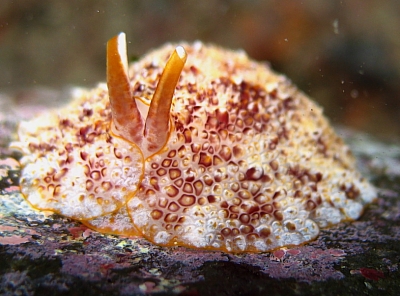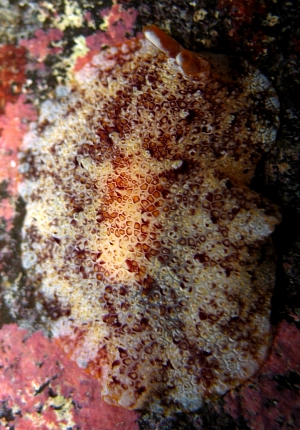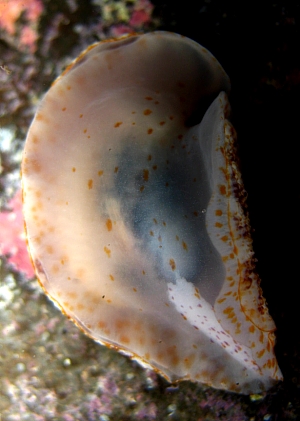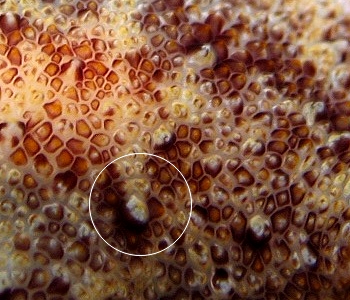Pleurobranchus albiguttatus from Reunion Island
December 13, 2006
From: Hugues Flodrops

Concerning message #11585:
Dear Bill,
I found under a stone, one other Pleurobranchus, near the where I found P. peroni [message #18662]. My best guess was P. albiguttatus but the pattern colour seemed more red than photo of Marina Poddubestkaia [#11585]. Is Pleurobranchus atlanticus a synonym of this species?
Thank you very much for your time and for the forum.
Locality: Etang-Salé Cote Rocheuse, 0,50 m, Reunion Island, Indian Ocean, 1 december 2006. Length: 40 mm. Photographer: Hugues Flodrops
Regards.
Hugues.
hugues.flodrops@wanadoo.fr



Dear Hugues,
While preparing your message I was surprised to see the treatment of P. atlanticus in the new book by Valdes et al. (2006), Caribbean Sea Slugs. I have discussed this in more detail in a separate mesage [#18917 ]
In my opinion the most distinctive external feature of P. atlanticus is the series of larger tubercles down each side of the midline which each have a white triangular mark on them. This is also the most distinctive external feature on the Indo-West Pacific species P. albiguttatus, and as I say in my earlier comments [#5301] I wouldn't be surprised if P. atlanticus turns out to be the same as P. albiguttatus.
It is interesting that your juvenile has a thin orange mantle border. Anne Dupont [message #5301] sent us a photo of two white juveniles, from the Caribbean, with a thin orange border, which I identified as P. atlanticus, which again reinforces the similarity between these two species. Mind you it is not unique to those two species as I illustrate a similar coloured juvenile of P. peroni on the Fact Sheet for that species.
So to your question about whether P. atlanticus is a synonym of P. alboguttatus, I can say we need to recheck their anatomy, but if I were a gambling man. I think I would put a lot of money on a 'yes' answer.
One interesting feature we can see in your photo [middle right] of the underside of the animal is the intense white elongate patch at the posterior end of the sole of the foot. This is a gland which develops in most species of Pleurobranchus as they reach maturity. I am pretty sure no one has ever studied the function of this gland - another one of the many things we still have to learn about these animals
Best wishes,
Bill Rudman
Related messages
-
Re: Pleurobranchus albiguttatus from sthn Queensland
From: Julie Marshall, March 5, 2009 -
Pleurobranchus albiguttatus from sthn Queensland
From: Gary Cobb, March 4, 2009 -
Re: Pleurobranchus albiguttatus from Reunion Island
From: Julie Marshall, December 15, 2006 -
Pleurobranchus albiguttatus from Mayotte
From: Marina Poddubetskaia, December 4, 2003 -
Pleurobranchus albiguttatus from Israel
From: Michael Levin, November 16, 2003 -
Pleurobranchus albiguttatus from the Philippines [2]
From: Erwin Koehler, June 14, 2003 -
Pleurobranchus albiguttatus from the Philippines
From: Erwin Koehler, June 2, 2003 -
Pleurobranchus albiguttatus – laying eggs
From: W.B. Rudman, January 7, 2003 -
Pleurobranchus albiguttatus from Phoenix Ids
From: Mary Jane Adams, October 24, 2002 -
Pleurobranch from Saudi Arabia
From: John Chuk, July 24, 2002
